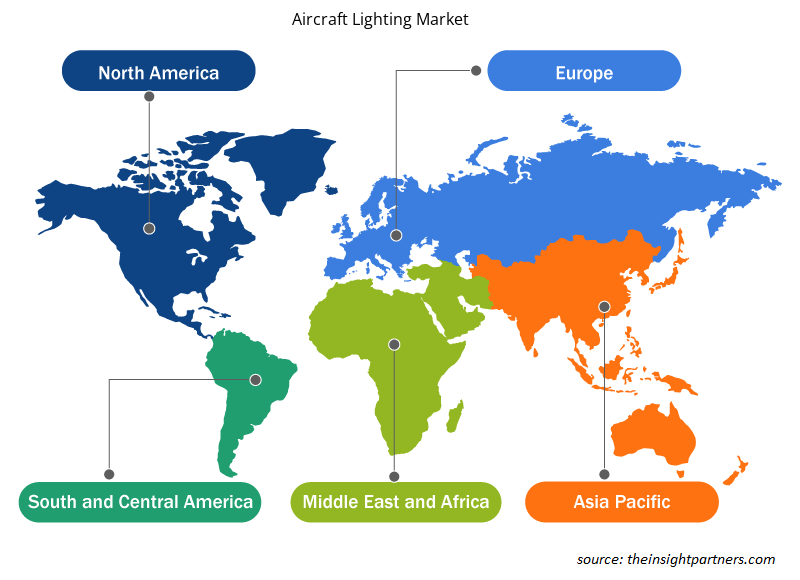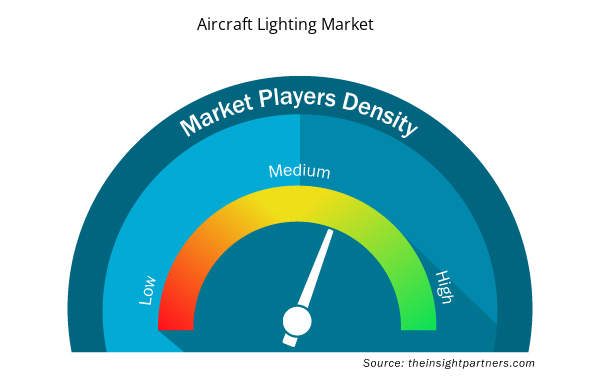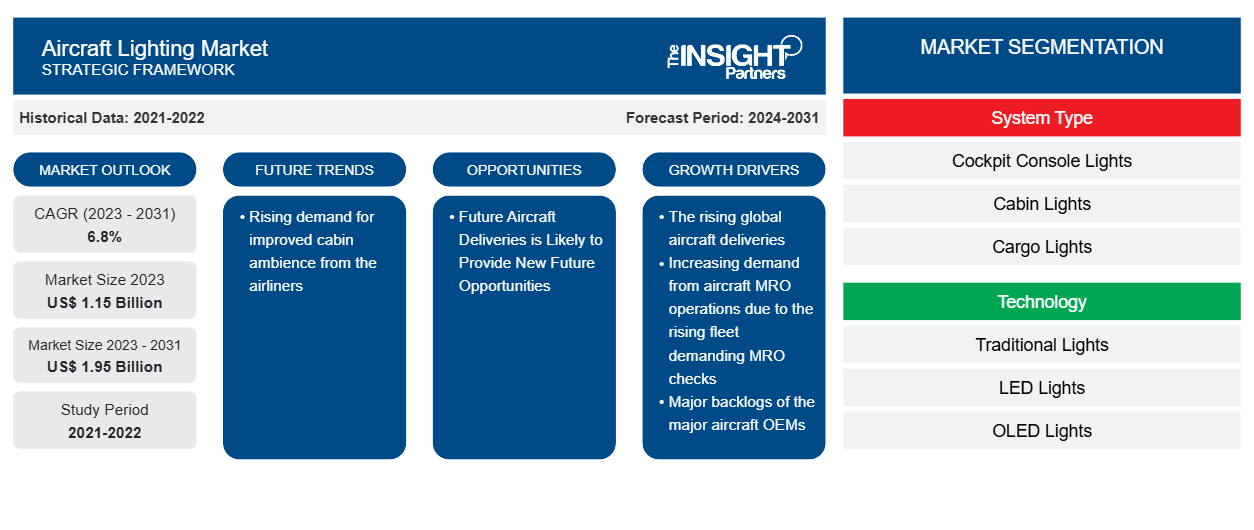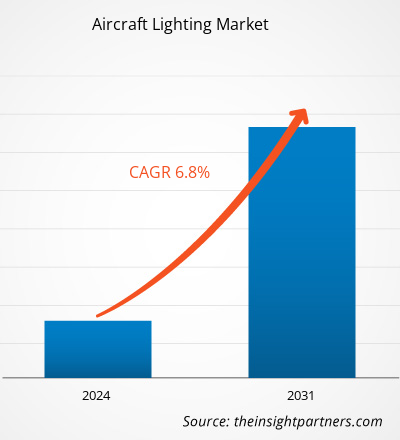飞机照明市场规模预计将从 2023 年的 88.5 亿美元增至 2031 年的 138.8 亿美元。预计 2023-2031 年市场复合年增长率为 6.8%。
飞机照明市场的主要趋势之一是航空公司对其各自机队的氛围有改善的需求。航空公司正致力于创新其各自的商用飞机模型的内部氛围,为各自的客户提供增强的航空旅行体验。
飞机照明市场分析
由于新冠疫情导致民航运营暂停,飞机照明市场在 2020 财年遭受了重大负面影响,目前正以健康的增长率增长。然而,在 2021 年恢复航空运营后(部分地区在 2022 年恢复),各航空公司通过各自对现有机队的航空维护运营推动了对飞机照明的需求。随着低成本航空公司的引入,不同地区的航空旅行需求也随之增加,这也推动了这一趋势。
飞机照明市场概况
未来几年,飞机照明市场可能会出现显著增长。飞机照明市场的增长归因于以下一些关键因素:
- 全球飞机交付量不断增长
- 由于飞机数量不断增加,需要进行 MRO 检查,因此对飞机 MRO操作的需求不断增加
- 主要飞机原始设备制造商的订单积压情况
- 飞机电气化日益兴起
这些因素可能会对飞机照明行业的健康发展产生重大影响。
然而,世界各国之间持续的地缘政治战争也可能对未来几年的航空公司运营产生影响,从而进一步阻碍飞机照明市场的发展。
定制此报告以满足您的需求
您可以免费定制任何报告,包括本报告的部分内容、国家级分析、Excel 数据包,以及为初创企业和大学提供优惠和折扣
- 获取此报告的关键市场趋势。这个免费样品将包括数据分析,从市场趋势到估计和预测。
飞机照明市场驱动因素和机遇
全球飞机数量的增长
全球飞机机队的不断增加是支持飞机照明需求的主要因素之一,无论是通过生产线安装还是改装部分。不同地区飞机和直升机交付数量的增加推动了对照明系统的需求;特别是对客舱和驾驶舱照明系统的需求。一些主要的飞机原始设备制造商,例如空客和波音,在 2023 年分别交付了约 735 架和 528 架商用飞机;而 2022 年则为 663 架和 480 架。这表明一年内交付的飞机数量逐渐增加,推动了 2023 年飞机照明市场的大部分增长。
未来飞机交付可能带来新的未来机遇
未来二十年商用和军用飞机的交付可能会在 2024 年至 2031 年的预测期内为市场供应商创造巨大的机会。例如,根据两大飞机 OEM 巨头空客和波音的数据,2023 年至 2042 年间可能会交付超过 40,800 架飞机。这将进一步增加全球飞机机队规模,并将在未来几年为售后市场/改装领域的飞机照明创造机会。
飞机照明市场报告细分分析
有助于得出飞机照明市场分析的关键部分是系统类型、技术、灯光类型、适合类型、飞机类型、最终用户和地理位置。
- 根据系统类型,飞机照明市场细分为驾驶舱控制台灯、客舱灯、货物灯、座椅接近灯等。客舱灯部分在 2023 年占据了更大的市场份额。
- 根据技术,市场细分为传统灯、LED 灯、OLED 灯和其他灯。2023 年,LED 灯占据了最大的市场份额。
- 就灯光类型而言,市场已分为车内灯和车外灯。车内灯部分在 2023 年占据了市场主导地位。
- 就适配类型而言,市场已分为直装和改装。直装细分市场在 2023 年占据了市场主导地位。
- 从终端用户来看,市场已细分为商用和军用。2023 年,商用市场占据主导地位。
飞机照明市场份额(按地区)分析
飞机照明市场报告的地理范围主要分为五个地区:北美、欧洲、亚太、中东和非洲、南美。
2023 年,北美占据了飞机照明市场的主导地位,而亚太地区在预测期内可能会出现显着增长。由于对先进照明解决方案的改造或改装需求巨大,预计亚太地区的飞机照明市场将出现快速增长。2023-2031 年期间,中东和非洲地区的复合年增长率可能达到 5.5% 左右。这主要是因为拥有大量公认的商用飞机机队,阿联酋航空、卡塔尔航空、阿提哈德航空和沙特阿拉伯航空等航空公司在采购新飞机和改造现有机队方面投入了大量资金。航空公司不断专注于提升客户体验,因此,为飞机改装先进的照明系统是该地区的主要趋势之一。
飞机照明市场新闻和最新发展
飞机照明市场通过收集一手和二手研究后的定性和定量数据进行评估,其中包括重要的公司出版物、协会数据和数据库。以下是飞机照明市场的发展和战略列表:
- 2023 年 10 月,Aviation Fabricators (AvFab) 选择 Elliott Aviation 子公司 Prizm Aircraft Products 为其 King Air 300 系列顶篷改装产品提供 RGBW 洗光灯。(来源:AvFab,新闻稿/公司网站/时事通讯)
- 2021 年 2 月,领先的飞机零部件供应商 Diehl Aviation 旗下子公司 Diehl Aerospace 与波音公司续签合同,为波音 787 梦想飞机提供内部照明系统。(来源:Diehl Stiftung & Co. KG,新闻稿/公司网站/时事通讯)
飞机照明市场区域洞察
Insight Partners 的分析师已详尽解释了预测期内影响飞机照明市场的区域趋势和因素。本节还讨论了北美、欧洲、亚太地区、中东和非洲以及南美和中美洲的飞机照明市场细分和地理位置。

- 获取飞机照明市场的区域特定数据
飞机照明市场报告范围
| 报告属性 | 细节 |
|---|---|
| 2023 年的市场规模 | 11.5亿美元 |
| 2031 年市场规模 | 19.5亿美元 |
| 全球复合年增长率(2023 - 2031) | 6.8% |
| 史料 | 2021-2022 |
| 预测期 | 2024-2031 |
| 涵盖的领域 | 按系统类型
|
| 覆盖地区和国家 | 北美
|
| 市场领导者和主要公司简介 |
|
飞机照明市场参与者密度:了解其对业务动态的影响
飞机照明市场正在快速增长,这得益于终端用户需求的不断增长,这些需求源于消费者偏好的不断变化、技术进步以及对产品优势的认识不断提高等因素。随着需求的增加,企业正在扩大其产品范围,进行创新以满足消费者的需求,并利用新兴趋势,从而进一步推动市场增长。
市场参与者密度是指在特定市场或行业内运营的企业或公司的分布情况。它表明在给定市场空间中,相对于其规模或总市场价值,有多少竞争对手(市场参与者)存在。
在飞机照明市场运营的主要公司有:
- 霍尼韦尔国际公司
- 科巴姆公司
- 赛峰集团
- STG航空航天有限公司
- 雷神技术公司
- 迪尔基金会
免责声明:上面列出的公司没有按照任何特定顺序排列。

- 了解飞机照明市场主要参与者概况
飞机照明市场报告范围和交付成果
“飞机照明市场规模和预测(2021-2031)”报告对以下领域进行了详细的市场分析:
- 范围内所有主要细分市场的全球、区域和国家层面的市场规模和预测
- 市场动态,如驱动因素、限制因素和关键机遇
- 未来主要趋势
- 详细的波特五力分析
- 全球和区域市场分析涵盖关键市场趋势、主要参与者、法规和最新市场发展
- 行业格局和竞争分析,涵盖市场集中度、热点图分析、知名参与者和最新发展
- 带有 SWOT 分析的详细公司简介
- 历史分析(2 年)、基准年、预测(7 年)及复合年增长率
- PEST 和 SWOT 分析
- 市场规模价值/数量 - 全球、区域、国家
- 行业和竞争格局
- Excel 数据集


- 3D Audio Market
- Fertilizer Additives Market
- Diaper Packaging Machine Market
- Energy Recovery Ventilator Market
- Quantitative Structure-Activity Relationship (QSAR) Market
- Skin Tightening Market
- Europe Surety Market
- Adaptive Traffic Control System Market
- Batter and Breader Premixes Market
- Cell Line Development Market

Report Coverage
Revenue forecast, Company Analysis, Industry landscape, Growth factors, and Trends

Segment Covered
This text is related
to segments covered.

Regional Scope
North America, Europe, Asia Pacific, Middle East & Africa, South & Central America

Country Scope
This text is related
to country scope.
Trends and growth analysis reports related to Aerospace and Defense : READ MORE..
- Honeywell International Inc
- Cobham Plc
- Safran Group
- STG Aerospace Ltd
- Raytheon Technologies Corporation
- Diehl Stiftung & Co. KG
- Astronics Corporation
- Oxley Group
- Bruce Aerospace
- Luminator Technology Group
The Insight Partners performs research in 4 major stages: Data Collection & Secondary Research, Primary Research, Data Analysis and Data Triangulation & Final Review.
- Data Collection and Secondary Research:
As a market research and consulting firm operating from a decade, we have published and advised several client across the globe. First step for any study will start with an assessment of currently available data and insights from existing reports. Further, historical and current market information is collected from Investor Presentations, Annual Reports, SEC Filings, etc., and other information related to company’s performance and market positioning are gathered from Paid Databases (Factiva, Hoovers, and Reuters) and various other publications available in public domain.
Several associations trade associates, technical forums, institutes, societies and organization are accessed to gain technical as well as market related insights through their publications such as research papers, blogs and press releases related to the studies are referred to get cues about the market. Further, white papers, journals, magazines, and other news articles published in last 3 years are scrutinized and analyzed to understand the current market trends.
- Primary Research:
The primarily interview analysis comprise of data obtained from industry participants interview and answers to survey questions gathered by in-house primary team.
For primary research, interviews are conducted with industry experts/CEOs/Marketing Managers/VPs/Subject Matter Experts from both demand and supply side to get a 360-degree view of the market. The primary team conducts several interviews based on the complexity of the markets to understand the various market trends and dynamics which makes research more credible and precise.
A typical research interview fulfils the following functions:
- Provides first-hand information on the market size, market trends, growth trends, competitive landscape, and outlook
- Validates and strengthens in-house secondary research findings
- Develops the analysis team’s expertise and market understanding
Primary research involves email interactions and telephone interviews for each market, category, segment, and sub-segment across geographies. The participants who typically take part in such a process include, but are not limited to:
- Industry participants: VPs, business development managers, market intelligence managers and national sales managers
- Outside experts: Valuation experts, research analysts and key opinion leaders specializing in the electronics and semiconductor industry.
Below is the breakup of our primary respondents by company, designation, and region:

Once we receive the confirmation from primary research sources or primary respondents, we finalize the base year market estimation and forecast the data as per the macroeconomic and microeconomic factors assessed during data collection.
- Data Analysis:
Once data is validated through both secondary as well as primary respondents, we finalize the market estimations by hypothesis formulation and factor analysis at regional and country level.
- Macro-Economic Factor Analysis:
We analyse macroeconomic indicators such the gross domestic product (GDP), increase in the demand for goods and services across industries, technological advancement, regional economic growth, governmental policies, the influence of COVID-19, PEST analysis, and other aspects. This analysis aids in setting benchmarks for various nations/regions and approximating market splits. Additionally, the general trend of the aforementioned components aid in determining the market's development possibilities.
- Country Level Data:
Various factors that are especially aligned to the country are taken into account to determine the market size for a certain area and country, including the presence of vendors, such as headquarters and offices, the country's GDP, demand patterns, and industry growth. To comprehend the market dynamics for the nation, a number of growth variables, inhibitors, application areas, and current market trends are researched. The aforementioned elements aid in determining the country's overall market's growth potential.
- Company Profile:
The “Table of Contents” is formulated by listing and analyzing more than 25 - 30 companies operating in the market ecosystem across geographies. However, we profile only 10 companies as a standard practice in our syndicate reports. These 10 companies comprise leading, emerging, and regional players. Nonetheless, our analysis is not restricted to the 10 listed companies, we also analyze other companies present in the market to develop a holistic view and understand the prevailing trends. The “Company Profiles” section in the report covers key facts, business description, products & services, financial information, SWOT analysis, and key developments. The financial information presented is extracted from the annual reports and official documents of the publicly listed companies. Upon collecting the information for the sections of respective companies, we verify them via various primary sources and then compile the data in respective company profiles. The company level information helps us in deriving the base number as well as in forecasting the market size.
- Developing Base Number:
Aggregation of sales statistics (2020-2022) and macro-economic factor, and other secondary and primary research insights are utilized to arrive at base number and related market shares for 2022. The data gaps are identified in this step and relevant market data is analyzed, collected from paid primary interviews or databases. On finalizing the base year market size, forecasts are developed on the basis of macro-economic, industry and market growth factors and company level analysis.
- Data Triangulation and Final Review:
The market findings and base year market size calculations are validated from supply as well as demand side. Demand side validations are based on macro-economic factor analysis and benchmarks for respective regions and countries. In case of supply side validations, revenues of major companies are estimated (in case not available) based on industry benchmark, approximate number of employees, product portfolio, and primary interviews revenues are gathered. Further revenue from target product/service segment is assessed to avoid overshooting of market statistics. In case of heavy deviations between supply and demand side values, all thes steps are repeated to achieve synchronization.
We follow an iterative model, wherein we share our research findings with Subject Matter Experts (SME’s) and Key Opinion Leaders (KOLs) until consensus view of the market is not formulated – this model negates any drastic deviation in the opinions of experts. Only validated and universally acceptable research findings are quoted in our reports.
We have important check points that we use to validate our research findings – which we call – data triangulation, where we validate the information, we generate from secondary sources with primary interviews and then we re-validate with our internal data bases and Subject matter experts. This comprehensive model enables us to deliver high quality, reliable data in shortest possible time.


 获取此报告的免费样本
获取此报告的免费样本